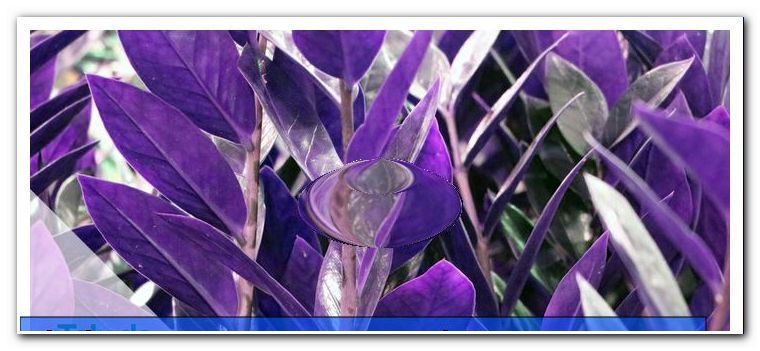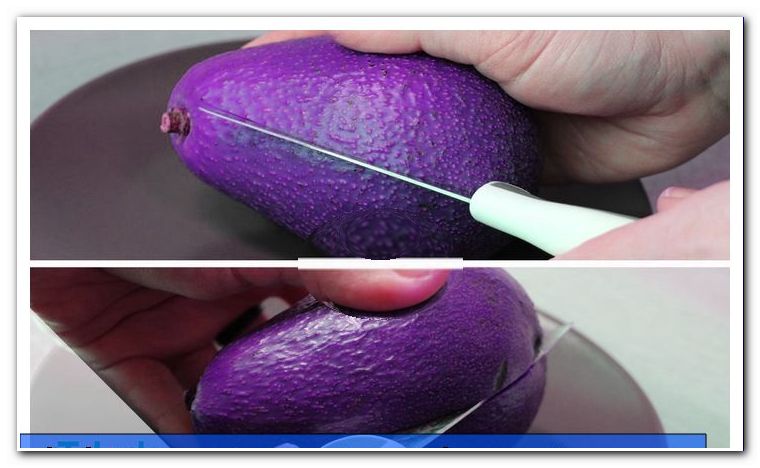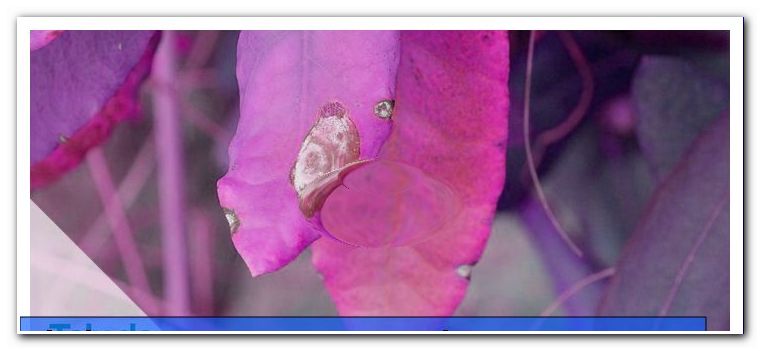Sew Beanie Hat - DIY Instructions and Patterns

- material
- amount of material
- patterns
- Draw section
- The bows
- Hang up cut
- Sewing instructions for beanie hat
- Reversible beanie without cuffs
- Reversible beanie hat with cuffs
- cuffs
- Sew the beanie together
- Quick guide
Autumn is here and with it the stormy, cold days. This is the best time for a cap. In this guide, we'll show you how to easily sew a beanie hat for yourself or your child.
Quick and easy to self-sewn beanie hat
Especially for beginners, simple cuts are suitable. Of course it is ideal if you can also create the right pattern for yourself. With a beanie cap, this is really not a big witchcraft and as a reversible beanie hat you will have two headgear in one.
Often you have a certain idea in mind when you need a new hat. In order to save yourself from the chatter of many shops until you find the right design, it makes sense to simply sew a hat yourself. Especially when it is as quick and easy as with beanie hats.
Difficulty level 1/5
(suitable for beginners)
Material costs 1/5
(depending on the choice of fabric between EUR 0, - from the remaining utilization and EUR 25, -)
Time expenditure 1/5
(including pattern for each exercise 30 min to 1 h)
material
For a beanie hat usually jersey fabric is processed. If you like it a bit warmer, you can also create one of the two fleece or sweat layers. However, a larger size should be sewn because these types of fabrics are not so easily stretchable.
amount of material
The amount of material is calculated according to the head circumference. In addition, the height / length of the beanie hat is freely selectable. The minimum dimensions are, however, about 40 cm x 60 cm respectively for indoor and outdoor part. The fabric width is the head circumference minus 10% and plus seam allowance.
In addition, you can sew with or without cuffs, depending on your choice. If stitched with cuffs, this cuff is 70% (for cuffed fabric) or 80% (for jersey fabric) wide and has twice the desired height plus seam allowances.

patterns
Of course, you will find many free patterns on the Internet that you can print and sew. So that you get a sense of why which dimensions are used, I would like to show today how to make a pattern for a beanie hat. In addition, you can customize your cut then individually and have in the end your very personal cut always ready, you can use in any size (head circumference).
Draw section

First, you need the head circumference of the person you want to sew the beanie hat for. Measure the widest part of the head (around forehead and back of the head). In my case, the cap should have a head circumference of 52 cm. I sew with Jerseystoffen, which stretch, so I subtract 10% (with sweat and fleece fabrics do not deduct anything) and I am with a head circumference of 46.8 cm . The cut is drawn in the break (ie the half cut), so I divide by 2 and land at 23.4 cm . Here comes the seam allowance added, which is 0.7 cm for me, so I am at 24.1 cm . I like to round and will work with 24 cm . That's my average width.
The height is variable. For an adult beanie hat, I suggest a rule of thumb:
Height = cutting width times 1.5 → that is 24 x 1, 5 = 46 cm
That's my cutting height. This height can always vary - to your taste.
1 of 3


So that the beanie cap is round at the top and not angular, now arches must be drawn. As a rule of thumb, remember the upper third. In the pattern, mark another two-thirds of the height, as the bows start at this mark.

Tip: The first time you try to sew a sample piece from another fabric, you can still make adjustments before sewing with the desired fabric.
The bows
You can decide for yourself whether your beanie hat should have four or five bows at the top. Basically, the more bows, the rounder the beanie tip. I make a pattern with four bows. To do this, I draw a line at my marker height, which I divide by four. Likewise, I mark these four points on the contour line. Then the points are connected as in the picture. I've used a curved ruler to do that, but you can just use a large plate to help.
If you want to sew a cuff
The cuff can be cut from cuffs or jersey fabric. When cuffed you take the desired head circumference and count 0.7 times. With jersey fabrics take the desired head circumference and count 0.8 times. The height may vary, but in any case must be cut twice in height plus seam allowances. So if you want the cuff to be 3 cm high, you'll need 7.4 cm cuff height (3 x 2 plus 2 x seam allowance). If you want to sew on a cuff, you should cut the basic cut at the appropriate height (in this case, 3 cm).
With or without cuffs ">
Whether you sew the beanie with or without cuffs is a matter of taste - on the one hand visually and on the other hand by the seam at the neck and not exactly on the turning line, which some feel disturbing. I show both variants today.
Hang up cut
The finished cut is now placed in the material break (ie on the folded fabric directly at the edge) and cut without seam allowance, since this was already taken into account on average.
Tip: When laying on the threadline and the motive! It should not be "upside down" later!
 If you do not turn over the Turning Beanie while wearing it, there is nothing else to consider. If it does, the area that will be turned over (about 6 - 8 cm) should be cut to size and stitched in the opposite direction, otherwise it will look like the picture and the handled part will be "upside down".
If you do not turn over the Turning Beanie while wearing it, there is nothing else to consider. If it does, the area that will be turned over (about 6 - 8 cm) should be cut to size and stitched in the opposite direction, otherwise it will look like the picture and the handled part will be "upside down".
Cut the cut in the break 1x for the inside and 1x for the outside. If you want to use a cuff, trim the cut in height by the appropriate amount and also prepare the cuff.
Sewing instructions for beanie hat
Reversible beanie without cuffs
First put inside and outside right to right (ie with the "nice" sides to each other) on each other and pin the straight line. Now sew with normal seam allowance with a minimal zigzag stitch (about 1 mm wide, stitch length normal) to ensure stretchability of the seam.
Tip: Of course you can also sew with an overlock machine, but just the front seam should be nice and a simple seam will wear less.
Then iron over the seam. Fold the two outer parts to the middle and attach the outer bow seams (of course on the inner fabric as well as on the outer fabric side) and sew them off. Then lay the two open edges on each other and fix the curves and the straight line on both sides. Mark here a turning opening with a length of 6 -10 cm, which lies above the cross-seam, at this point it will attract attention the least since it comes to rest at the back of the head.

Sew all staked areas (except the turn-around opening), turn the beanie cap, and iron the edges of the turn-in opening inward.

To close the turning opening, there are now two options available: Either a magic or ladder seam, which is sewn by hand (detailed instructions also in the tutorial for the Dinkelkissen) and invisible from the outside, so is particularly beautiful. Or you simply sew with a short edge using the sewing machine. This spot is at the back of the head and is very inconspicuous. Sewing with the sewing machine of course costs much less time.
And already the reversible beanie hat is finished without cuffs.

Tip: This variant can be worn simply folded down or so, so that twice as many layers of fabric meet in the ear and forehead area. Then the beanie hat keeps these areas a bit warmer.
Reversible beanie hat with cuffs
For this variant, first put the inside and outside together separately in the fabric break, tie the open straight to the bow lug and also sew this part.

The seams become particularly flat when they are sewn with a normal sewing machine and then the seam allowances are ironed out. Of course you can also sew with your overlock machine.

cuffs
Halve the cuff fabric first in the width (the "stripes" in the fabric run from top to bottom, it is sewn laterally) and quilt this with a simple straight stitch. Mark opposite corners with front center pins. Fold the seam allowances apart and place the fabric so that the seam allowances are centered on the top and mark both sides.

Now fold the cuff fabric up so that the edges come together. Secure the two layers of the seam allowances with a pin. Now fold down the top layer and put it over all three other layers, so that it comes to the bottom. The "nice" side of your cuff fabric is now on the outside. Now lay the cuff so that the needles of the two opposite sides meet, remove a needle and put both layers together. Thus, the cuff is "quartered" by the pins.

Also mark these quarters on both beanie sides - as well as the cuffs. Turn one beanie and place it in the other beanie so that the two right (that is, the "nice" sides) come together. In between, the cuff is now inserted. The marks of the quarters are your clues.
Sew the beanie together
Now sew all four layers of fabric (twice cuff fabric and one inner and one outer fabric each) with the usual seam allowance all around and turn your workpiece so that the left fabric side of both beanie parts is on the outside.
Now fold the pages (as in the version without cuffs) so that the seam is at the front in the middle. Stick the side bows on both sides (four times) and sew them together. Afterwards, place your workpiece so that the long seam comes to rest on the side and attach the upper sheets firmly. In one of these two arcs mark a turning opening which points towards the long seam. Sew everything (except for the turn-around), turn on the beanie hat, iron in the seam allowances of the turn-around opening and close them (again, either by hand or with the machine).

Now push one part of the beanie hat in the other part and this variant is ready.

Quick guide
1. Measure the circumference of the head and calculate all necessary measurements.
2. Create a beanie cut (and cut the cuff for V2)
3. Cut beanie
4. V1: Sew parts together, release the opening, turn, sew - done!
5. V2: Separate inner and outer parts separately at side, insert cuffs and sew on
6. Turn to the left and sew up the upper bends, release the turn-around opening, turn, sew up
7. Done!
The twisted pirate




